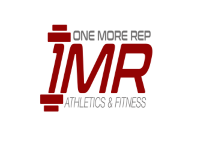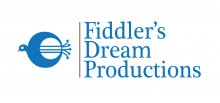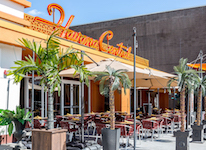Looking for answers to customer support questions? Click Here
Breast Augmentation: Achieving Better Results with Less Discomfort and Downtime
Traditionally, breast augmentation is associated with a considerable amount of pain and down time, but this no longer needs to be the case.
Breast implants may be placed either below or above the pectoralis major muscle (a muscle located just beneath the breast). The advantage to placing the implant below the muscle is that there is much less interference with mammography, as well as more soft tissue to cover the implant, making it less palpable and visible.
Pregnancy/lactation causes stretching of the breast tissue with loss of fullness and bottoming-out of the breast. Often, a decision is made to place the implant above the muscle to better fill out the breast-skin envelope; however, in these cases there is less soft tissue coverage of the implant and less support for it. Using a specially created technique called dual-plane augmentation, women with such breasts can enjoy the benefits of a breast augmentation with implant placement below the muscle.
A breast implant consists of a silicone shell (bag) filled with either saline (salt water) or silicone gel. Silicone gel filled implants were re-released by the FDA in November 2006 after extensive study. They have become increasingly popular. Saline implants are available in either a round or teardrop shape. The advantage of a saline teardrop implant over a round saline implant is that the overall breast shape will be more natural in most cases. Use of saline teardrop implants requires greater attention to detail in placement than a saline round implant. The advantage of saline round implants are that they are easier to use and less expensive. Silicone gel implants are available in a round shape only. As silicone gel round implants are more flexible in shape than a saline round implant, in my experience, I believe that the overall shape of a breast augmented with a silicone gel round implant is more natural than that obtained with a saline round implant.
Breast implants may be placed through incisions in the armpit, around the nipple or under the breast. The advantage to an armpit incision is that the scar is well hidden and there is no scar on the breast itself. Although most surgeons perform this procedure blindly, minimally invasive endoscopic breast augmentation (similar to laparoscopic surgery) provides enhanced visualization of the surgical pocket on a large television monitor, affording greater precision during the surgery.
A periareolar scar (around the nipple) is usually inconspicuous. The disadvantage to the technique is that wound healing varies greatly according to the biology of the individual and thus some women have a more noticeable scar, which would now appear on the most conspicuous part of the breast.
The most common surgical approach to breast augmentation is an inframammary (breast crease) incision. This scar is barely noticeable as the lower portion of the breasts often covers the crease and scar. This surgical approach provides the surgeon with the greatest visualization of the surgical pocket, and the ability to make internal modifications as necessary in a breast that has drooped secondary to pregnancy/lactation. The techniques best suited for you will be discussed at your consultation.
Using techniques specifically designed to reduce post-operative discomfort, the post-operative experience has been dramatically improved. Many patients return to normal activities of living within 24 hours. During the past 3 1/2 years, nearly all our patients have been able to raise their arms up high over their head before they left the recovery room. Some patients have even put on makeup and brushed their own hair before going home. Occasionally, patients have felt good enough after surgery to go out shopping or to dinner later the same day! Rapid recovery after breast augmentation surgery is the culmination of proper preoperative planning, delicate and precise surgical technique, refinements in anesthetic management, and postoperative care designed to promote a quick recovery with minimal discomfort. Average return to work is about five days, and often less. Most patients experience some mild discomfort after surgery, but overall, the average amount of discomfort and downtime after surgery have been significantly reduced while the quality and consistency of the aesthetic results have been greatly improved.
Dr. Mark Epstein is a dual board certified plastic surgeon specializing in breast augmentation, with a special focus on improving the patient experience before and after surgery.
Breast implants may be placed either below or above the pectoralis major muscle (a muscle located just beneath the breast). The advantage to placing the implant below the muscle is that there is much less interference with mammography, as well as more soft tissue to cover the implant, making it less palpable and visible.
Pregnancy/lactation causes stretching of the breast tissue with loss of fullness and bottoming-out of the breast. Often, a decision is made to place the implant above the muscle to better fill out the breast-skin envelope; however, in these cases there is less soft tissue coverage of the implant and less support for it. Using a specially created technique called dual-plane augmentation, women with such breasts can enjoy the benefits of a breast augmentation with implant placement below the muscle.
A breast implant consists of a silicone shell (bag) filled with either saline (salt water) or silicone gel. Silicone gel filled implants were re-released by the FDA in November 2006 after extensive study. They have become increasingly popular. Saline implants are available in either a round or teardrop shape. The advantage of a saline teardrop implant over a round saline implant is that the overall breast shape will be more natural in most cases. Use of saline teardrop implants requires greater attention to detail in placement than a saline round implant. The advantage of saline round implants are that they are easier to use and less expensive. Silicone gel implants are available in a round shape only. As silicone gel round implants are more flexible in shape than a saline round implant, in my experience, I believe that the overall shape of a breast augmented with a silicone gel round implant is more natural than that obtained with a saline round implant.
Breast implants may be placed through incisions in the armpit, around the nipple or under the breast. The advantage to an armpit incision is that the scar is well hidden and there is no scar on the breast itself. Although most surgeons perform this procedure blindly, minimally invasive endoscopic breast augmentation (similar to laparoscopic surgery) provides enhanced visualization of the surgical pocket on a large television monitor, affording greater precision during the surgery.
A periareolar scar (around the nipple) is usually inconspicuous. The disadvantage to the technique is that wound healing varies greatly according to the biology of the individual and thus some women have a more noticeable scar, which would now appear on the most conspicuous part of the breast.
The most common surgical approach to breast augmentation is an inframammary (breast crease) incision. This scar is barely noticeable as the lower portion of the breasts often covers the crease and scar. This surgical approach provides the surgeon with the greatest visualization of the surgical pocket, and the ability to make internal modifications as necessary in a breast that has drooped secondary to pregnancy/lactation. The techniques best suited for you will be discussed at your consultation.
Using techniques specifically designed to reduce post-operative discomfort, the post-operative experience has been dramatically improved. Many patients return to normal activities of living within 24 hours. During the past 3 1/2 years, nearly all our patients have been able to raise their arms up high over their head before they left the recovery room. Some patients have even put on makeup and brushed their own hair before going home. Occasionally, patients have felt good enough after surgery to go out shopping or to dinner later the same day! Rapid recovery after breast augmentation surgery is the culmination of proper preoperative planning, delicate and precise surgical technique, refinements in anesthetic management, and postoperative care designed to promote a quick recovery with minimal discomfort. Average return to work is about five days, and often less. Most patients experience some mild discomfort after surgery, but overall, the average amount of discomfort and downtime after surgery have been significantly reduced while the quality and consistency of the aesthetic results have been greatly improved.
Dr. Mark Epstein is a dual board certified plastic surgeon specializing in breast augmentation, with a special focus on improving the patient experience before and after surgery.
Welcome New Vendors
- The Barn At Old Bethpage Discover the charm a...
- Jack & Rose Jack & Rose Floral D...
- Tellers: An American Chophouse Tellers: An American...
- Cup Of Tea Creative Unique Wedding Gifts...
- Speeches for Milestones The Big Day Has Ar...
- Long Island Bridal Expo Connecting Brides & ...
- 1 More Rep 1 More Rep offers Ap...
- Bellport Inn The Bellport Inn –...
- Snapphotto Snapphotto is one of...
- Fiddlers Dream Music Asher began classica...
- Havana Central Featuring real Cuban...
- Primerica Nelida Flynn Founded in 1977 on t...
X
Sign In
Sign in with Social Networking
By Signing in with Facebook or Google, You accept LIWedding Terms of use and Privacy Policy
X
Create an Account
Sign up with Social Networking
By Signing up with Facebook or Google, You accept LIWedding Terms of use and Privacy Policy
Already have an Account ? Sign In
X


















